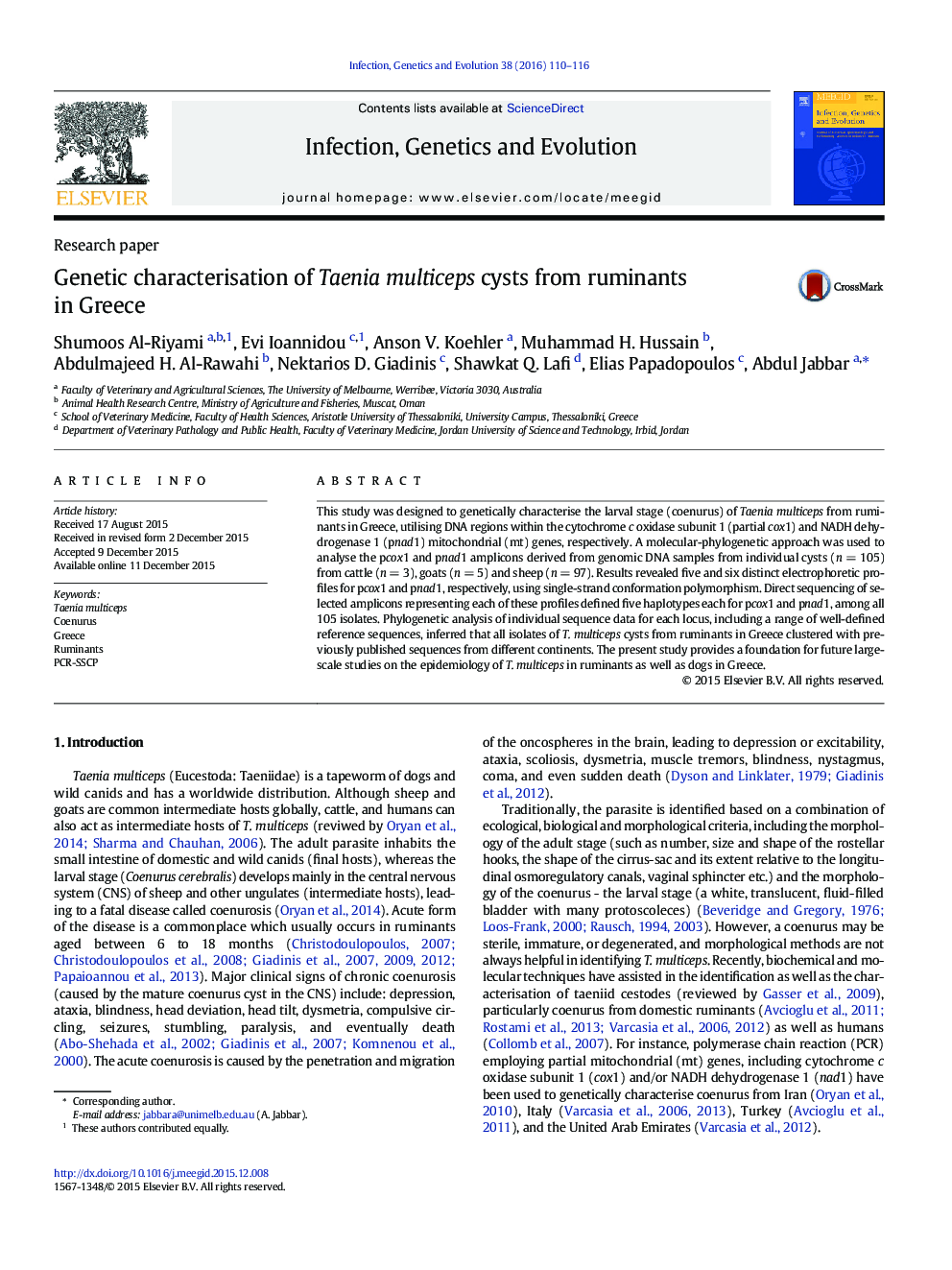| Article ID | Journal | Published Year | Pages | File Type |
|---|---|---|---|---|
| 5908484 | Infection, Genetics and Evolution | 2016 | 7 Pages |
â¢Genetic variation was determined in Coenurus cerebralis from ruminants in Greece.â¢Five and six haplotypes were detected for cox1 and nad1 mt genes, respectively.â¢No intermediate host-adapted strains of Taenia multiceps were found.
This study was designed to genetically characterise the larval stage (coenurus) of Taenia multiceps from ruminants in Greece, utilising DNA regions within the cytochrome c oxidase subunit 1 (partial cox1) and NADH dehydrogenase 1 (pnad1) mitochondrial (mt) genes, respectively. A molecular-phylogenetic approach was used to analyse the pcox1 and pnad1 amplicons derived from genomic DNA samples from individual cysts (n = 105) from cattle (n = 3), goats (n = 5) and sheep (n = 97). Results revealed five and six distinct electrophoretic profiles for pcox1 and pnad1, respectively, using single-strand conformation polymorphism. Direct sequencing of selected amplicons representing each of these profiles defined five haplotypes each for pcox1 and pnad1, among all 105 isolates. Phylogenetic analysis of individual sequence data for each locus, including a range of well-defined reference sequences, inferred that all isolates of T. multiceps cysts from ruminants in Greece clustered with previously published sequences from different continents. The present study provides a foundation for future large-scale studies on the epidemiology of T. multiceps in ruminants as well as dogs in Greece.
